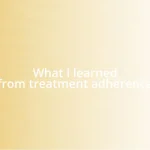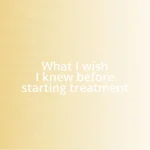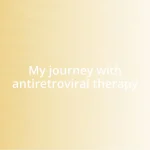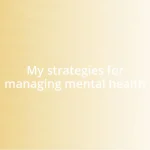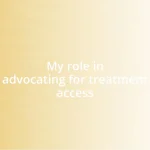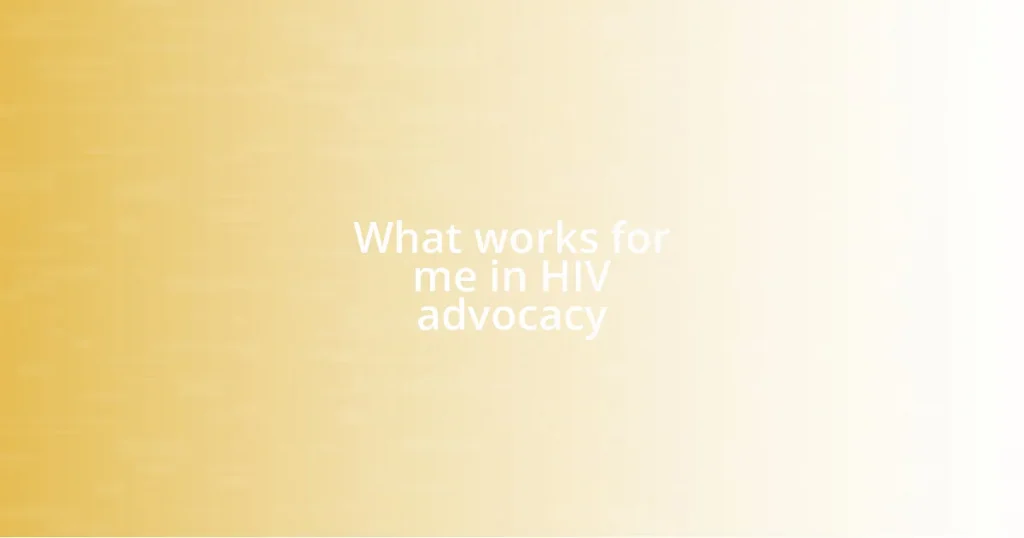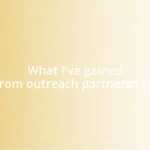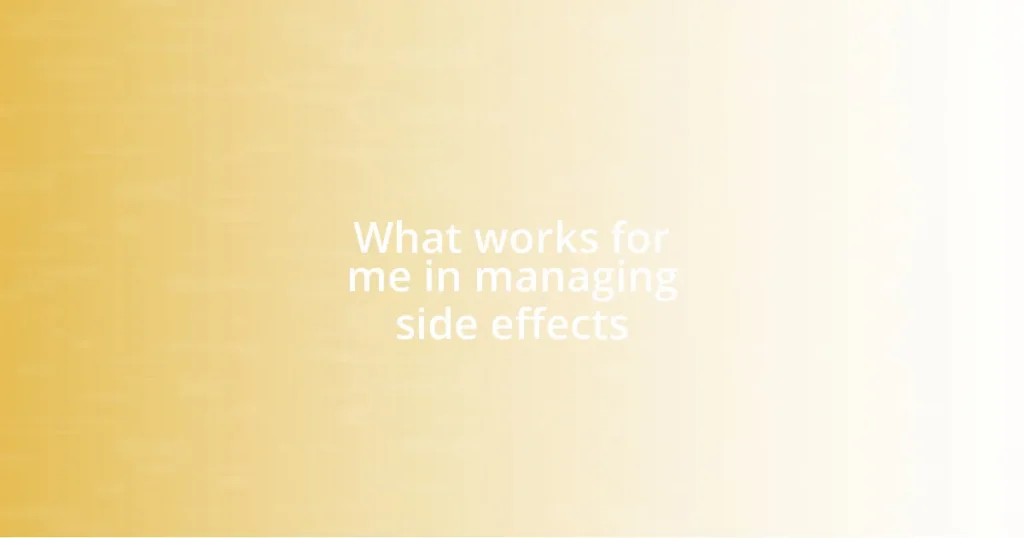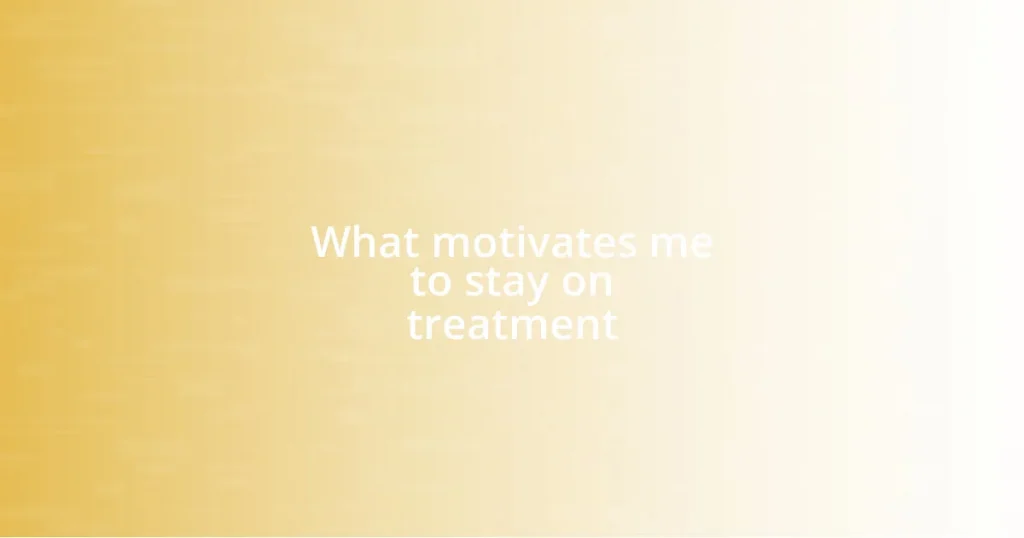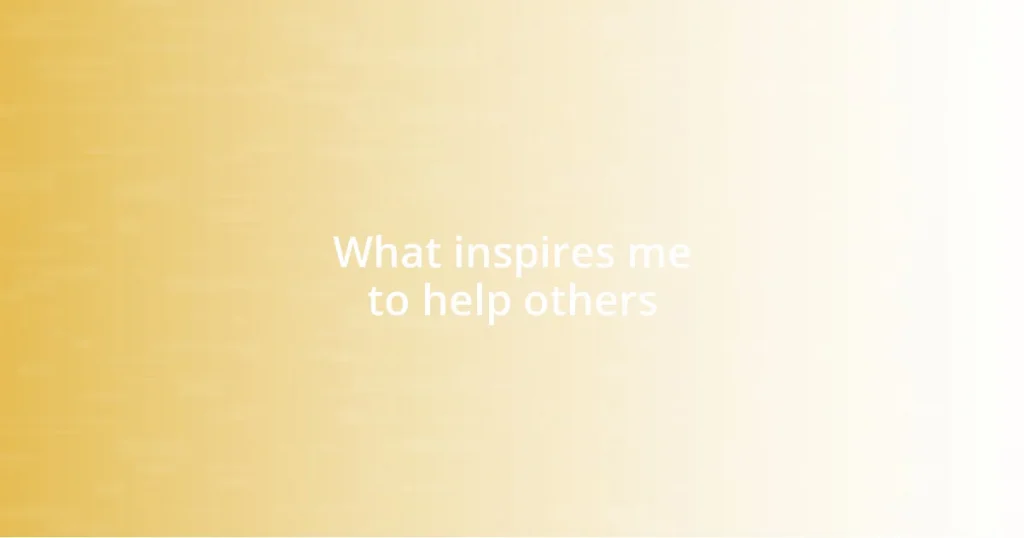Key takeaways:
- HIV advocacy personalizes the issue, turning statistics into impactful stories that build community and understanding.
- Effective communication adapts messages for diverse audiences, using clear language and fostering active engagement to enhance understanding.
- Building partnerships is essential; collaborative efforts amplify advocacy impact and create an inclusive environment for diverse voices.
- Measuring success involves both quantitative metrics, like social media engagement, and qualitative insights, such as personal testimonies that highlight real-life impacts.

Understanding HIV Advocacy Importance
HIV advocacy is vital because it humanizes the statistics, transforming abstract numbers into real stories of resilience and pain. I remember attending a local support group where individuals shared their journeys. Listening to them made me realize how crucial it is to create spaces for these voices, so that others don’t feel alone in their struggles.
The importance of advocacy extends beyond individual experiences; it drives awareness and education at a societal level. I once participated in a community outreach event where we distributed pamphlets and engaged in conversations about HIV prevention and stigma. Seeing the curiosity in people’s eyes when they learned something new was a powerful reminder of how knowledge can shift perceptions and combat ignorance.
Moreover, advocacy plays a pivotal role in influencing policy changes that can improve the lives of those impacted by HIV. When I reflected on the changes we achieved through collective efforts—like increased funding for HIV resources—it struck me that every voice counts in this fight. Isn’t it inspiring to think how even small actions can lead to significant transformation in our communities?

Personal Experiences Shaping Advocacy
Attending an HIV advocacy event for the first time was a transformative experience for me. I remember standing in the back, feeling hesitant to share my own story, but as I listened to others, their courage ignited something within me. It became abundantly clear that personal stories—raw and unfiltered—have the power to resonate deeply. They dismantle barriers, fostering connections between individuals who grapple with similar challenges.
Through this journey, I’ve learned some key lessons that have shaped my approach to advocacy:
- Vulnerability is Strength: Sharing my struggles not only helps me heal but also invites others to open up.
- Community Matters: Collaborating with others amplifies our voices, turning advocacy into a collective mission.
- Active Listening is Crucial: Sometimes, just being there for someone can have a profound impact, leading to authentic connections.
- Education is Empowering: I’ve witnessed the transformative power of knowledge and how it can change lives, one conversation at a time.
Every interaction leaves a mark, reminding me of the significant role our shared experiences play in advocacy.

Effective Communication Strategies
Effective communication in HIV advocacy is crucial, and I’ve found that tailoring messages to different audiences makes a big difference. For instance, when I speak to healthcare providers, I focus on the clinical aspects and statistics. In contrast, when addressing community members, I emphasize relatable stories and shared experiences to foster empathy and understanding. This adaptability ensures that the message resonates, no matter the audience.
I’ve also discovered the importance of using clear, simple language, particularly when discussing complex topics like HIV. One memorable moment was during a workshop where I used analogies related to everyday health concerns. This approach helped participants better grasp the nuances of HIV prevention methods. Seeing the “aha” moments on their faces reminded me how clarity can transform confusion into comprehension.
Moreover, active engagement is key. During a recent local event, I initiated a Q&A session and encouraged participants to share their questions and thoughts. Listening to their concerns not only validated their feelings but also sparked meaningful conversations. It’s a reminder that effective communication is not just about delivering information, but also about building relationships and fostering dialogue.
| Strategy | Description |
|---|---|
| Tailored Messaging | Adapt messages based on the audience—medical professionals vs. community members. |
| Clear Language | Use simple analogies to explain complex ideas, making them relatable. |
| Active Engagement | Encourage Q&A sessions to validate concerns and foster meaningful conversations. |

Building Community Partnerships
Building community partnerships in HIV advocacy has been a game-changer in my personal experience. I vividly recall a community health fair where I connected with local organizations. We pooled resources and created a shared space for education and support. The energy was electric, transforming a simple outreach event into a collaborative success where everyone felt valued.
Trust plays a crucial role in these partnerships. I’ve found that by investing time in relationship-building, organizations can better understand each other’s strengths and limitations. During one particularly rewarding collaboration, we worked closely with local schools to provide comprehensive sex education. The thrill of watching students engage with the material, knowing we’d played a part in that, was incredibly fulfilling.
Have you ever thought about how community partnerships can extend beyond the usual boundaries? I once attended a gathering that included not just healthcare professionals but also artists and community leaders. This diverse alliance sparked innovative ideas, blending health advocacy with cultural expression. I left feeling inspired, realizing that when we open our doors to diverse voices, the potential for impact is limitless.

Harnessing Social Media Impact
Harnessing the power of social media in HIV advocacy has been a revelation for me. One time, I shared a personal story on Instagram about my journey with a loved one living with HIV. The response was overwhelming; people from all over shared their stories and insights, creating a supportive online community. It reminded me of the profound connection that social media can foster, allowing us to share experiences, resources, and hope in ways that traditional advocacy sometimes struggles to achieve.
I’ve also noticed how important visual content is in this realm. During a recent campaign, I used infographics to break down HIV statistics and prevention methods. They were eye-catching and made complex information digestible, sparking conversations I never anticipated. Did you know that images can increase engagement significantly? I found that when followers could see compelling visuals alongside my messages, it led to more shares, likes, and, ultimately, greater awareness.
Engaging directly with my audience has taught me the value of responsiveness. In one instance, I hosted a live Q&A session on Facebook, addressing myths and facts about HIV. The questions flowed in, and the genuine concern from viewers struck me deeply. It was a reminder of how social media can transform a one-way communication model into a vibrant dialogue. People crave connection and understanding, and through social platforms, we can foster a sense of belonging and community around advocacy that feels personal and impactful.

Engaging Policymakers Effectively
Engaging with policymakers effectively has been one of the most transformative aspects of my HIV advocacy journey. I remember a particular meeting where I had the chance to present data about the local HIV rates to a group of decision-makers. As I shared the statistics, I made sure to connect those numbers to real lives—stories of people who had faced barriers to care. I could see the shift in their expressions; suddenly, it wasn’t just a presentation; it was about people, and that moment reminded me of the heart behind advocacy.
Building genuine relationships can also lead to impactful outcomes. During a legislative session, I requested a coffee meeting with one of my local representatives. I shared not only the pressing needs of our community but also my personal experiences with systemic barriers. To my surprise, our conversation opened the door to further discussions where they invited me to collaborate on policy changes. This experience taught me that taking the time to humanize the issue, rather than just pushing for change, can lay the groundwork for lasting advocacy relationships.
Have you ever strategized how to align your advocacy goals with policymakers’ agendas? I recall crafting a concise briefing document that highlighted both the urgency of HIV funding and potential economic benefits for the community. By framing the issue within their priorities, I felt empowered to bridge the gap. It was fascinating to witness their interest spike when the conversation turned to how supporting HIV initiatives could yield social and economic returns. That alignment isn’t just beneficial; it’s essential for impactful advocacy that resonates on multiple levels.

Measuring Advocacy Success
Measuring the success of advocacy can often feel elusive, but I’ve found that tangible metrics make a significant difference. For instance, tracking the number of people who engage with my campaigns on social media provides insight into their reach. Just last month, I launched a survey alongside a campaign, which revealed that nearly 70% of respondents felt more educated about HIV after our outreach. It highlighted the importance of direct feedback – something I think every advocate should prioritize.
But numbers aren’t everything. I vividly recall a community forum where I presented on stigma reduction. Afterward, a young attendee shared how my words inspired them to approach their own family about their status. That moment reinforced for me that advocacy isn’t just about shifting statistics; it’s about touching lives. The emotional impact can often be a better measure of success than any chart or graph.
Thinking of metrics, have you considered how personal stories can serve as powerful indicators of advocacy effectiveness? At one fundraising event, I listened to several testimonials from individuals whose lives had changed due to increased access to HIV education and resources. Witnessing firsthand the real-life outcomes of our efforts drives home the importance of both qualitative and quantitative measures. It’s those shared experiences that, in my eyes, should shape how we gauge our success moving forward.



